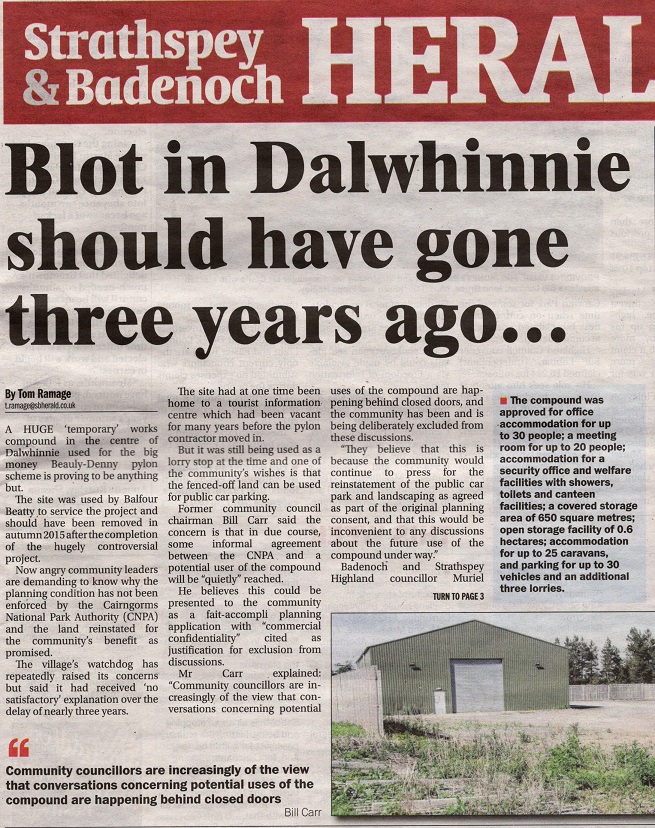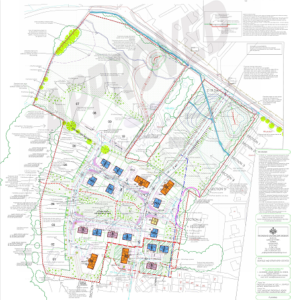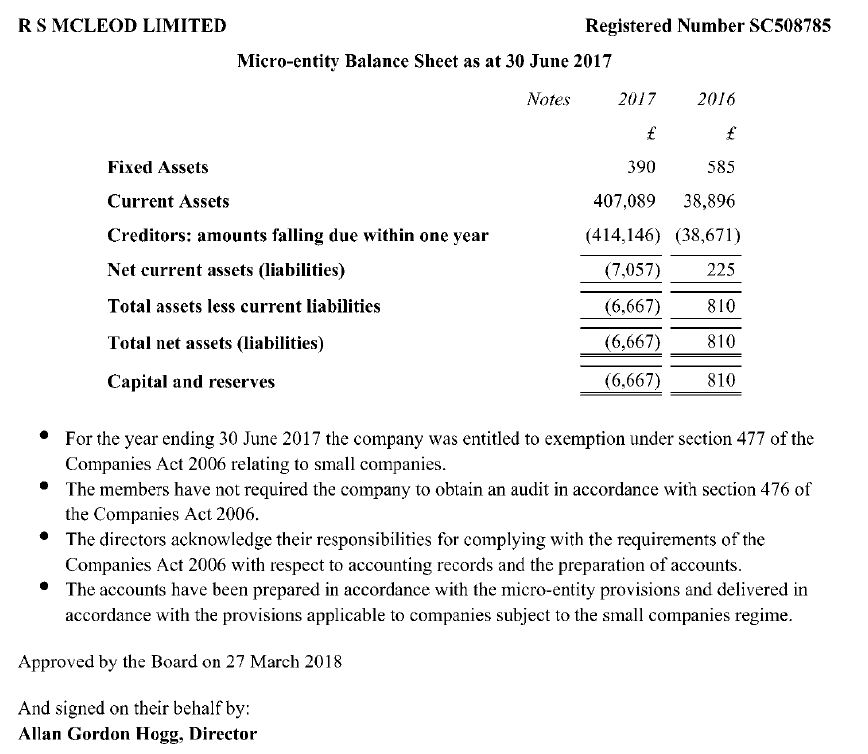There have been numerous recent reports of failures to enforce long term planning obligations within the Cairngorms National Park – these are conditions of planning permissions which remain in place after the permitted work or development has been completed. They often cover the re-instatement of temporary works after the work has been completed or the long term maintenance of landscaped areas within a development.
Last week Balfour Beatty’s temporary works compound in Dalwhinnie hit the news.

The report states that this compound should have been removed at the end of the Beauly-Denny powerline work, but 3 years on CNPA Planning has failed to enforce a planning condition requiring its removal and ground restoration.
Other recent examples include:
- The disused quarry at Dalwhinnie (see here). The quarry was first granted approval in 1999 before the CNPA was created. Back in 2008, when the CNPA agreed to an extension to its operating life, a Section 75 legal agreement was supposed to be put in place to secure proper restoration of the ground when quarrying ended. The quarry is now disused but restoration has not happened.
- SSE’s failure to restore the track on the Dalnacardoch Estate (see here). This is part of a much wider issue of temporary construction tracks used for the Beauly-Denny powerline not being restored or if restored the workmanship being of poor quality and appears to be the responsibility of the Scottish Government rather than the CNPA. Again enforcement of the related planning conditions has been severely lacking.
While Parkswatch is going to cover some positive news about the CNPA taking enforcement action in Glen Banchor in the next week, I have a concern over the risk of a similar future failure at the Beachen Court housing development in Grantown on Spey (see here) like what has happened around Dalwhinnie.
The potential enforcement issues at Beachen Court

The developer, R S McLeod Ltd, has planning obligations to complete a large landscaping scheme and carry out landscape maintenance for a minimum of 10 years. Documents entitled “Proposed Soft Landscape Maintenance and Management Regime were approved as part of CNPA major planning permission 2016/0060/DET and the phase 1 of this development approved as part of CNPA planning permission 2017/0286/DET.
So what is the potential problem?

You might expect the developer will take on his obligations to complete the approved landscaping scheme and will maintain it according to the approved maintenance regime.
R S McLeod Ltd. (the development main contractor for this housing development) was incorporated in June 2015 with a share capital of £100. The latest accounts (to 30 June 2017) posted by R S McLeod Ltd. show that the company has a negative value balance sheet.

There is therefore a very significant risk that R S McLeod Ltd could default on its landscaping planning obligations. If this happens before the housing development is completed, there is a prospect that a company taking over the contract to build the remaining houses may take on the landscape planning obligations, however if the default happens at the end of the house building, then the obligation to complete the landscaping and maintain it would fall on public funds – probably Highland Council.
It is to prevent such risks to public funds that the generally accepted good practice for planning authorities is to require the developer to take out a bond or bank guarantee. This is like taking out insurance – this bond or bank guarantee will pay out in the event of the developer defaulting on his obligations. I have seen planning authorities even requiring such bonds from national house builders (with FTSE listings) to cover landscaping and associated long term maintenance obligations – far less from a negative value company like R S McLeod Ltd.
In my submission to the CNPA Planning Committee on both of the planning application hearings for the Beachen Court development, I reminded the Committee of the need for a bond or bank guarantee to prevent risk to public funds if the developer defaulted on these long term maintenance obligations. Incredulously, the only answer I got was, “we don’t do that sort of thing here”.
Thus, should we be surprised to read about so many defaults on long term planning obligations within the Cairngorms National Park? It’s not clear, for example, from the planning application for the Dalwhinnie compound, whether a S75 Agreement – which the Planning Committee at the time to its credit insisted on – was ever completed. This should be a matter of public record.
In my view, the CNPA Planning Authority’s track record falls well short of good practice in either:
– not enforcing such obligations and/or
– not putting in place the appropriate financial vehicles to protect the public purse or prevent landscape eyesores being created and left unrestored within our National Park.
Let’s hope that is about to change.